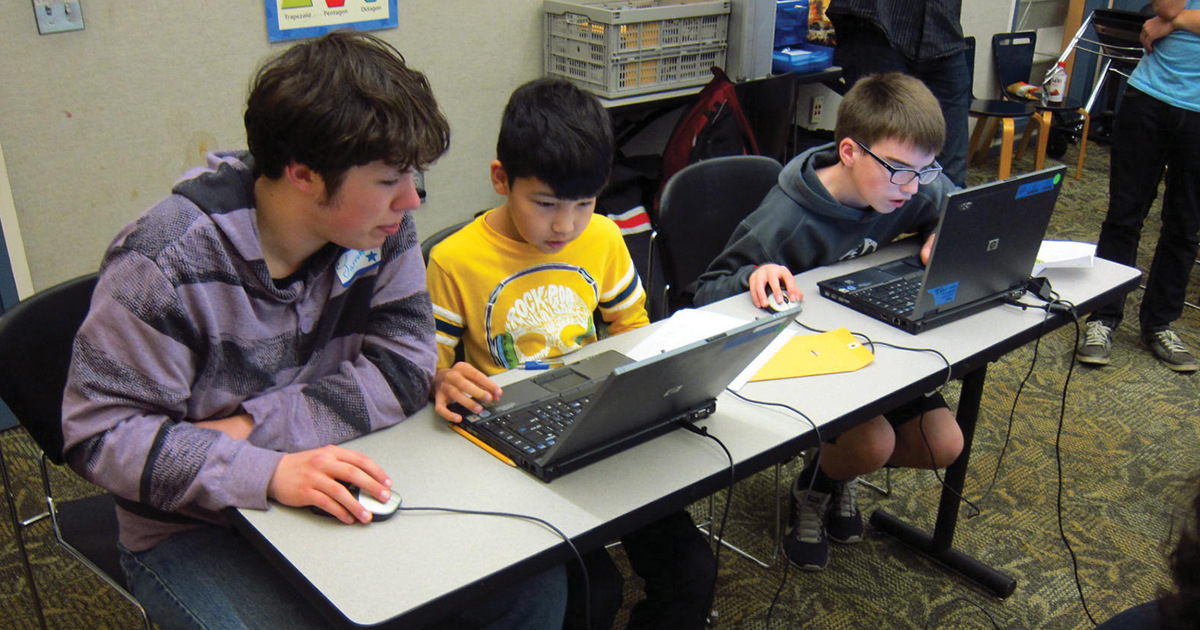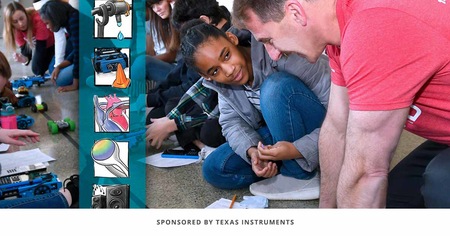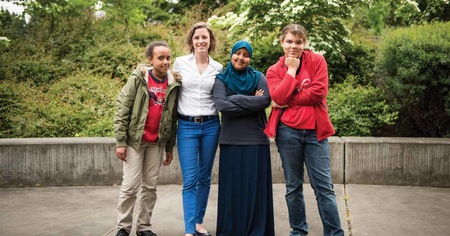One of the greatest assets of afterschool education is the freedom to offer a learning environment that is different from a traditionally structured classroom. Afterschool environments allow for small multi-age learning groups with flexible, student-centered curricula that have the ability to follow the interests and needs of young people. Small groups of young people who are transitioning from formal learning to play--plus a motivated, non-science specialist staff—make the perfect combination for hands-on inquiry investigations where process can take the front seat from content.
The afterschool setting and hands-on STEM inquiry go hand in hand, but successfully managing these types of activities can be stressful. Here are a few tips to help you get started embracing the "chaos."
Successful hands-on inquiry requires planning and structured learning objectives. When choosing and planning an activity think about these questions.
- What activity would young people want to explore and solve?
- What is the lesson objective?
- What are the learning goals?
- How will you judge that successful learning has taken place?
- What background information do you need to know as the facilitator?
- What information do young people need to know to be successful?
- How does the content of the activity relate to other knowledge that young people may already know?
Recognize that implementing hands-on inquiry activities shifts the responsibility for learning from the teacher to young people. Young people become responsible for solving the problem and finding answers, and your role becomes that of a guide and facilitator.
As facilitator, you need to provide guidance and motivation while encouraging equal participation, risk taking, question asking and indirect assistance that allows young people to find their own answers. Every young person in your group should feel a sense of accomplishment wihle working through the activity. Use constructive feedback to emphasis and encourage collaboration and communication. Make sure that you allow time for diversions as young people come up with their own questions, experiments and solutions. End each activity with a debrief discussion to address questions such as: What skills were used? What was learned? What takeaways could be useful for different activities and questions?
Hands-on inquiry can seem chaotic when compared to more traditional didactic methods. Activities generally require some form of manipulatives—and young people should be talking with one another and, in many cases, moving around the room. To effectively manage this takes planning.
- Have young people help set ground rules that focus on safety and respect for all.
- As young people engage in a fun activity, create a signal ahead of time to use as a method to get the group quiet and focused on you when you need.
- Decide how the equipment and supplies will be organized.
- Decide how the supplies and equipment will be collected and distributed.
- Have supplies like water and paper towels on hand for quick, easy cleanup.
- Develop a strategy for forming work groups. Form groups from a mix of backgrounds and abilities.
- Consider ways to ensure there is equal participation from all young people.
- Plan a timeline for your activity and include time for wrap-up and cleanup.
- Think about the developmental level of the motor skills of the participating youth. For example, if an activity calls for tying a knot, consider if all young people can tie knots. Will you need to practice knot tying with the group, or tie knots as preparation for the activity?
- Consider the preparations to be done ahead of time to make sure that the activity runs smoothly. For example, if the activity requires tape, tear strips of tape and hang them off the edge of the table so young people do not need to share one roll of tape.
- Remember that some activities will not go as planned. Try to think of any sidetrack questions and investigations that young people may come up with and provide the time and supplies to explore them, if possible. Often times in hands-on inquiry, the journey is as important as the end result, and student-driven explorations can be the motivation that propels their learning.
Hands-on inquiry is motivating and fun. It can often blur the lines between play and learning. However, it can take practice to master. You will not be instantly successful and neither will young people. Take time to foster the right atmosphere. Practice and encourage collaboration and communication with your group. Encourage risk taking and teach that it is OK to fail. Sometimes wrong answers can lead to the right question. Start small to provide both you and young people practice, and carefully think through each activity ahead of time to make sure you have a strategy for successful facilitation.
Practice, practice, practice!
Written by Andy the Science Wiz, NAA STEM Specialist, Andy Allan.
Photo courtesy of Pixel Arts Game Education.




